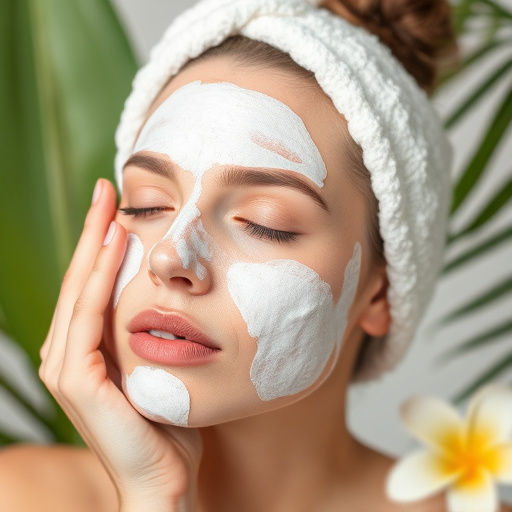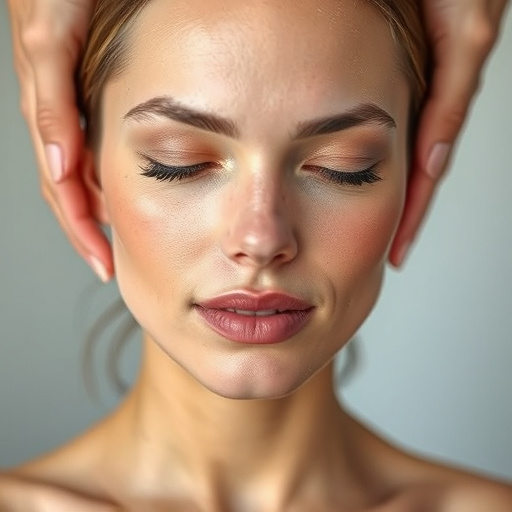Acne Scar Treatment: Unlocking Optimal Results with Personalized Aftercare
Acne scars result from disrupted collagen production during flare-ups, leading to various types such…….
Acne scar treatment has emerged as a critical aspect of dermatological care, offering hope and restoration to individuals struggling with the lasting marks of acne. This comprehensive guide aims to delve into the intricacies of acne scar management, exploring various treatments, their effectiveness, and the global impact on skincare routines. By understanding the current landscape, historical foundations, and future prospects, readers will gain valuable insights into achieving healthier, more confident skin.
Acne scar treatment refers to a multifaceted approach designed to minimize the appearance of scars left by acne, a common skin condition affecting individuals worldwide. These scars can range from atrophic (depressed) to hypertrophic or keloid (raised) marks, each requiring specific treatment strategies. Historically, the focus has been on surgical excision and filling agents, but advancements in dermatology have led to a diverse array of non-invasive options.
The core components of acne scar treatment include:
Assessment and Diagnosis: Dermatologists carefully evaluate the type and severity of scars, considering factors like depth, size, and location. This step is crucial for tailoring an effective treatment plan.
Topical Treatments: Creams and gels containing ingredients like retinoids, vitamin C, and alpha hydroxy acids (AHAs) can improve skin texture and reduce the appearance of fine lines and depressions.
Laser Therapy: Laser resurfacing and fractional laser treatments offer precise targeting of scar tissue, stimulating collagen production to enhance skin rejuvenation.
Fillers and Injections: Dermal fillers, such as hyaluronic acid or collagen-based products, are injected into depressed scars to elevate them to the level of surrounding healthy skin.
Microdermabrasion: This procedure gently sands away surface scar tissue, promoting healthier skin regeneration.
The significance of acne scar treatment lies in its ability to restore self-confidence and improve overall skin health. Effective management can prevent further scarring and enhance the appearance of treated areas, leading to significant improvements in quality of life for affected individuals.
Acne scar treatment has transcended geographical boundaries, influencing skincare routines worldwide. However, regional variations and cultural preferences play a role in shaping treatment choices:
North America and Europe: These regions are at the forefront of acne scar treatment research, with advanced laser technologies and topical formulations widely available. Fillers like hyaluronic acid have gained immense popularity due to their versatility and relatively mild side effects.
Asia Pacific: In countries like Japan and South Korea, double-action treatments combining exfoliation and hydration have become popular. Additionally, the use of natural ingredients, such as green tea extract and snail mucus, is on the rise, reflecting a blend of traditional and modern skincare practices.
Middle East and Africa: The demand for rapid results drives the popularity of surgical excision techniques in these regions. However, with growing access to technology, non-invasive methods are gaining traction, especially among younger populations.
Global trends reveal a diverse landscape:
| Region | Dominant Trends | Notable Preferences |
|---|---|---|
| North America/Europe | Laser resurfacing, Topical retinoids | Advanced technologies, Medical-grade skincare |
| Asia Pacific | Exfoliating serums, Natural ingredients | Double-action treatments, Hydration focus |
| Middle East/Africa | Surgical excision, Quick fixes | Traditional methods, Results-driven approaches |
The economic implications of acne scar treatment are significant, with a thriving market driven by consumer demand and innovative product developments.
Technological breakthroughs have revolutionized acne scar treatment, offering safer, more effective options:
Fractional Laser Therapy: This advanced technique uses lasers to create tiny wounds in targeted areas, stimulating collagen production and improving skin texture. It is particularly effective for atrophic scars and has minimal downtime.
Microneedling with RF (Radiofrequency): Combining microneedling with radiofrequency energy provides deeper penetration, enhancing collagen stimulation and scar reduction.
AI-Driven Skincare: Artificial intelligence (AI) applications in skincare include personalized treatment recommendations and advanced imaging techniques for precise diagnosis. AI-based apps can even predict scar formation, enabling proactive measures.
3D Printing of Skin: Research in 3D printing has led to the creation of artificial skin with potential applications in scar repair and tissue engineering. This technology could revolutionize wound healing and scar management in the future.
Regulatory bodies play a crucial role in ensuring the safety and efficacy of acne scar treatment products and procedures. Key policies and regulations include:
FDA (U.S. Food and Drug Administration) Approval: In the U.S., the FDA regulates cosmetic procedures and products, requiring clinical trials for certain devices and ingredients.
Cosmetics Regulations (EU): The European Union has stringent rules for cosmetic products, including ingredient safety and labeling requirements.
International Standards: Organizations like the International Standardization Organization (ISO) set guidelines for medical devices and skincare products, ensuring quality and consistency worldwide.
These regulations cover product formulations, device safety, clinical trial requirements, and post-market surveillance, safeguarding consumers and fostering industry innovation.
Despite significant advancements, acne scar treatment faces several challenges and criticisms:
Cost and Accessibility: High treatment costs and limited accessibility, especially in underserved regions, create barriers to care. Insurance coverage varies, affecting affordability for many individuals.
Inconsistent Results: Different treatments yield varying results based on individual skin types and scar severity. Finding the right approach can be a lengthy process, leading to frustration among patients.
Side Effects: While generally safe, some procedures and products may cause temporary discomfort, redness, or peeling. Managing these side effects is essential for patient comfort and satisfaction.
Actionable Solutions:
Insurance Coverage Expansion: Advocacy for broader insurance coverage can increase accessibility. Policyholders and healthcare providers can collaborate to address financial barriers.
Personalized Treatment Plans: Customizing treatment protocols based on individual needs improves outcomes. Dermatologists should offer a range of options, allowing patients to choose the best fit.
Research and Education: Ongoing research is vital to developing more effective and affordable treatments. Educating consumers about available options empowers them to make informed choices.
A 27-year-old female patient presented with moderate atrophic scars on her forehead and cheeks, impacting her self-confidence. She underwent non-invasive laser resurfacing using a fractional CO2 laser. After a series of treatments spaced over several months, significant improvements were observed:
Outcome: The patient’s skin texture became smoother, and scar depth decreased noticeably. Hyperpigmentation associated with acne also lightened, leading to a more even complexion.
Lessons Learned: Fractional laser resurfacing is an effective option for atrophic scars, offering long-lasting results with minimal downtime. Patient education about the procedure’s benefits and realistic expectations are essential for satisfaction.
A 32-year-old male patient had been struggling with prominent hypertrophic acne scars on his chest, which made him self-conscious. He opted for filler injections using hyaluronic acid-based products. Over a 6-month period:
Progress: The patient noticed a substantial improvement in the appearance of his scars, with a more even skin surface. He reported increased confidence and a positive impact on his social interactions.
Key Takeaways: Filler injections provide rapid results for hypertrophic scars, offering a temporary yet effective solution. Individualized treatment plans and ongoing support from healthcare professionals are crucial for optimal outcomes.
The acne scar treatment landscape is poised for further growth and innovation, driven by technological advancements and evolving consumer preferences.
Personalized Medicine: Genomic research will enable tailored treatments based on individual genetic predispositions to scarring.
Non-Invasive Technologies: Advanced technologies like 3D printing and nanomaterials could revolutionize scar repair, offering innovative solutions for complex cases.
Telemedicine and Digital Tools: Virtual consultations and AI-powered apps will expand access to care, particularly in underserved regions.
Combinational Therapies: Combining multiple modalities, such as laser and filler treatments, offers synergistic effects, potentially reducing treatment time and enhancing results.
Stem Cell Therapy: Stem cell-based products are being explored for their regenerative properties, showing promise in early studies for scar repair.
Global Collaboration: Sharing knowledge and resources internationally can accelerate research and improve access to cutting-edge treatments.
Patient Education and Engagement: Empowering patients with knowledge about various treatment options fosters trust and adherence to recommended protocols.
Regulatory Harmonization: Streamlining regulatory processes globally can facilitate the introduction of innovative treatments, benefiting patients worldwide.
Acne scar treatment has come a long way since its early beginnings, evolving into a highly effective and diverse field. As technological advancements continue to shape skincare practices, individuals worldwide have access to improved solutions for managing acne scars. From laser therapies to AI-driven diagnostics, the future holds immense potential for enhancing skin health and restoration.
By addressing economic considerations, navigating regulatory frameworks, and embracing emerging trends, the global acne scar treatment market is poised for significant growth. This article has provided a comprehensive overview, highlighting the importance of understanding historical foundations, cultural influences, and cutting-edge innovations. As we look ahead, continued research, collaboration, and patient-centric approaches will shape the future of acne scar management, ultimately empowering individuals to embrace their skin with newfound confidence.
Q1: How do I know which acne scar treatment is right for me?
A: Consulting a certified dermatologist is essential. They will assess your scars, skin type, and lifestyle to recommend the most suitable treatment plan.
Q2: Are there any at-home treatments for acne scars?
A: While some over-the-counter products claim to reduce scars, results may vary. Topical retinoids and vitamin C serums can help, but for significant scars, professional treatments are often necessary.
Q3: Is laser treatment painful?
A: Laser procedures are generally well-tolerated with topical anesthetics. Some minor discomfort is normal, but advanced technologies minimize this.
Q4: Can acne scar treatment be expensive? Are there affordable alternatives?
A: Costs vary widely depending on the treatment and region. Many insurance plans cover certain procedures, and innovative financing options are available. Exploring at-home treatments and natural remedies can also offer more budget-friendly alternatives.
Q5: How long does it take to see results from acne scar treatment?
A: Results depend on the severity of scars and chosen treatment. Some methods show immediate improvements, while others may take several months for noticeable changes. Consistency and patience are key to achieving optimal outcomes.

Acne scars result from disrupted collagen production during flare-ups, leading to various types such…….

Acne scars, caused by untreated acne, damage collagen and elastin, leading to atrophic (depressed) o…….